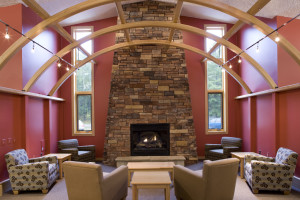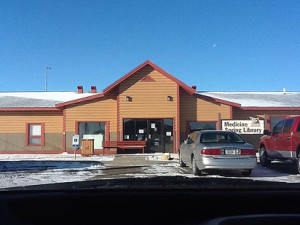If I had to pick a phrase to summarize one major message from TLAM so far, it would be: context, context, context. Our projects and many of our discussions focus on tribes in Wisconsin — this is our privilege and responsibility both, based as we are at a state university like UW–Madison. We have seen that although there are many common threads, every tribe’s history is unique, and so are the political, social, and economic conditions each faces today. This is the first level of context we engage: the communities in which our projects take place, the people working to bring them into being as well as the people who will be served by them.

But there is another level of context for our work and learning. Janice Rice, a long-time library activist whom we are fortunate enough to have on our campus, spoke to our class about her involvement since the 1970s with the movement to improve American Indian library services. As a young librarian, Janice found herself traveling to Denver, in place of a colleague who cancelled last-minute, to attend the 1978 White House Pre-Conference on Indian Library and Information Services On or Near Reservations. This meeting was organized by folks (librarians, American Indian scholars, and others) who felt it was time to do something about the gap they saw in access to library services for American Indian populations. The agenda was to discuss what recommendations should be made for improvement, in advance of an overhaul of library directives and legislation that was slated to happen in Washington, D.C.
As Janice related, the conference proved to be a catalyst for forging important relationships and articulating a vision for what tribal cultural institutions could and ought to be. Janice went on to assist with the formation, and serve as President, of the American Indian Library Association, a group that works to support tribal libraries and maintain a forum for the voices of tribal librarians within ALA.

We were fortunate to also be joined via Skype by Aaron LaFromboise, a librarian at Medicine Spring Library in Browning, Montana. (See the library’s eye-catching website here: http://li-brary.bfcc.edu.) Aaron’s presentation gave us a portrait of how the primary way tribal libraries have become established is in the context of community and technical colleges on or near reservations.
Such libraries often blur the lines between academic and public library, as well as library and archival institution, as they stretch their resources to fill the gaps in services they see in their communities. Medicine Spring Library, for example, while administered by and located on the cam-pus of Blackfeet Community College, has a dedicated children’s area and also maintains dis-plays of important cultural artifacts. The clear pride Aaron takes in her community as well as her own role within it was inspiring.
So we see that projects like the ones we’re working with are part of a broader movement, a long time in the making. This is a movement to provide excellent library services for Native American communities as well as meaningful work in library settings for Native people interested in that career path.
As another way to explore broader contexts, we are doing what we call “cultural institution profiles”. Each of us has chosen a tribal library or archive beyond Wisconsin to research and prepare a short presentation about for the rest of the class. Every week (well…if we’re not so busy with other stuff that we run out of time!) someone offers the insights they have gained about their institution.

Fittingly, the same week Aaron and Janice visited our class, Carolina gave us a profile of what is considered to be the very first established tribal library. The Colorado River Indian Tribes Library has been open now over fifty years and hosts an impressive calendar of public programs. And I shared what I learned from speaking with Sandy Tharp-Thee of the Iowa Tribe of Oklahoma Library, a much newer (established in the 1990s) institution whose story I found to be a character study of one librarian’s extraordinary efforts as a grassroots organizer and advocate for cultural preservation and self-education. (Read some of Sandy’s story, told here on the occasion of being named a White House Champion for Change in 2013: https://www.whitehouse.gov/blog/2013/06/17/library-programs-tailored-tribal-community.)
Through our classmates’ presentations, we get more specifics of what tribal libraries, archives, and museums look like in many different cultural, political, and socioeconomic contexts throughout North America.
– Sam Link
